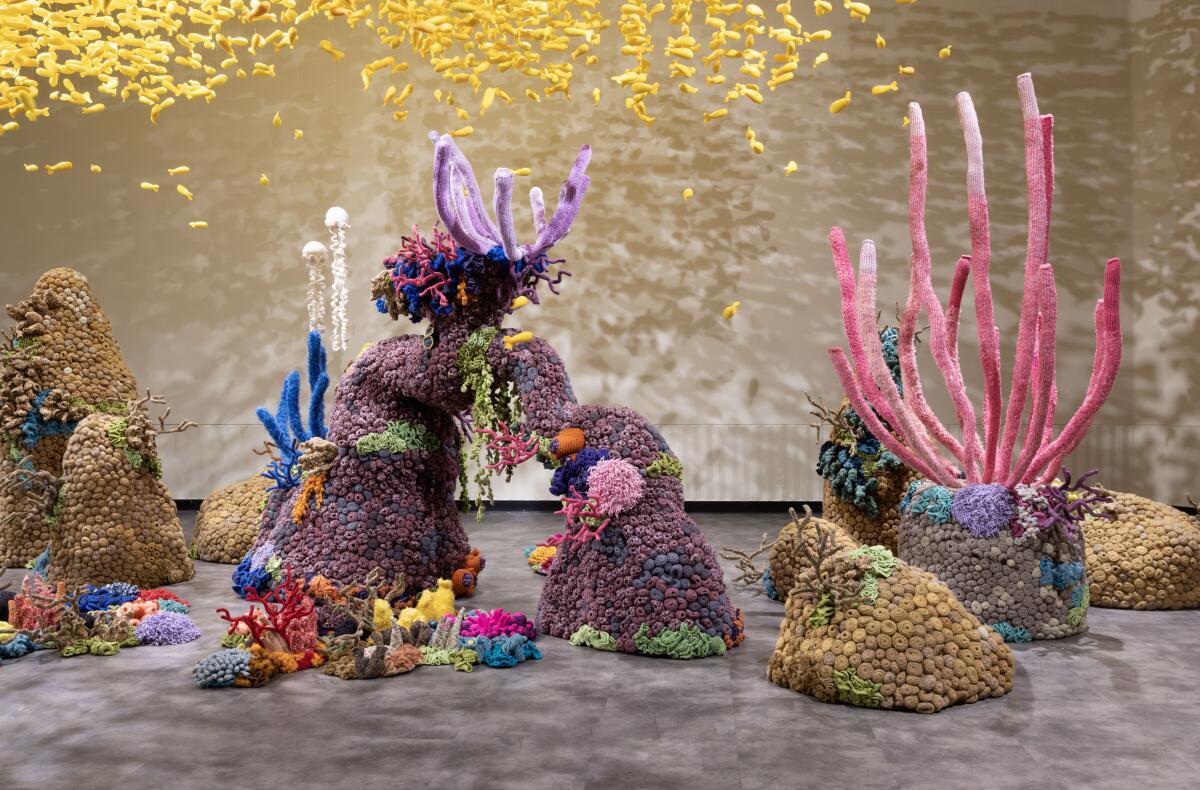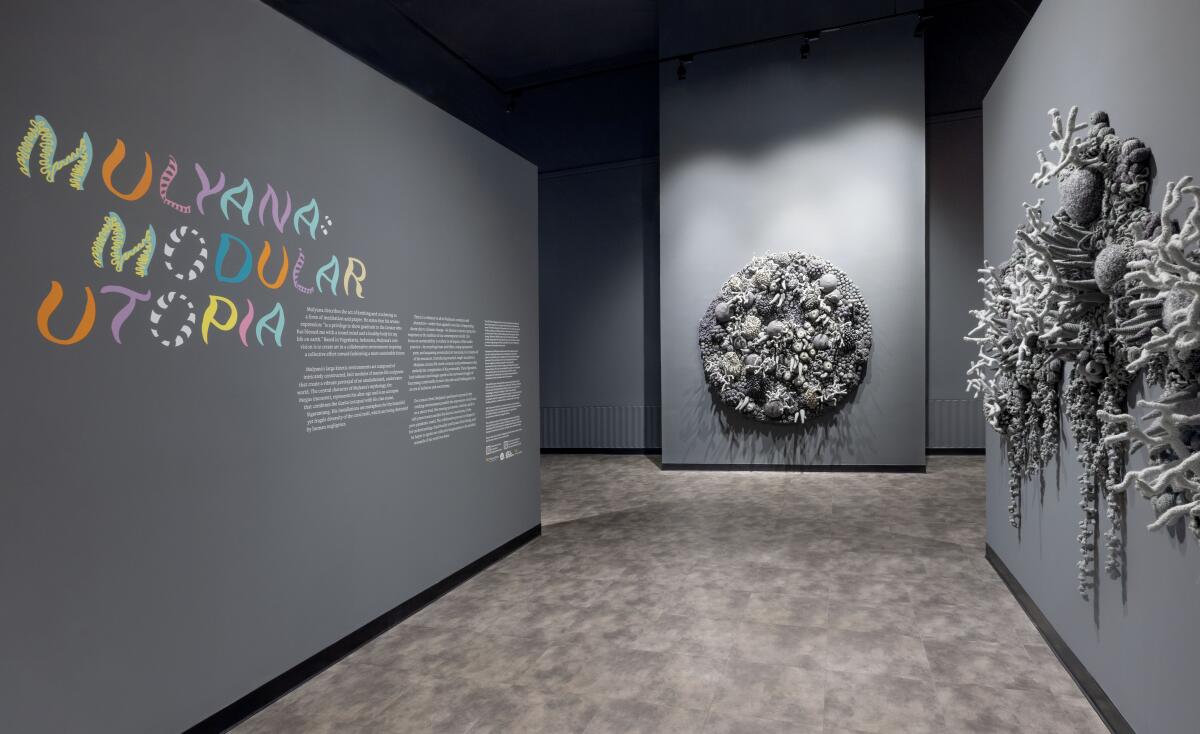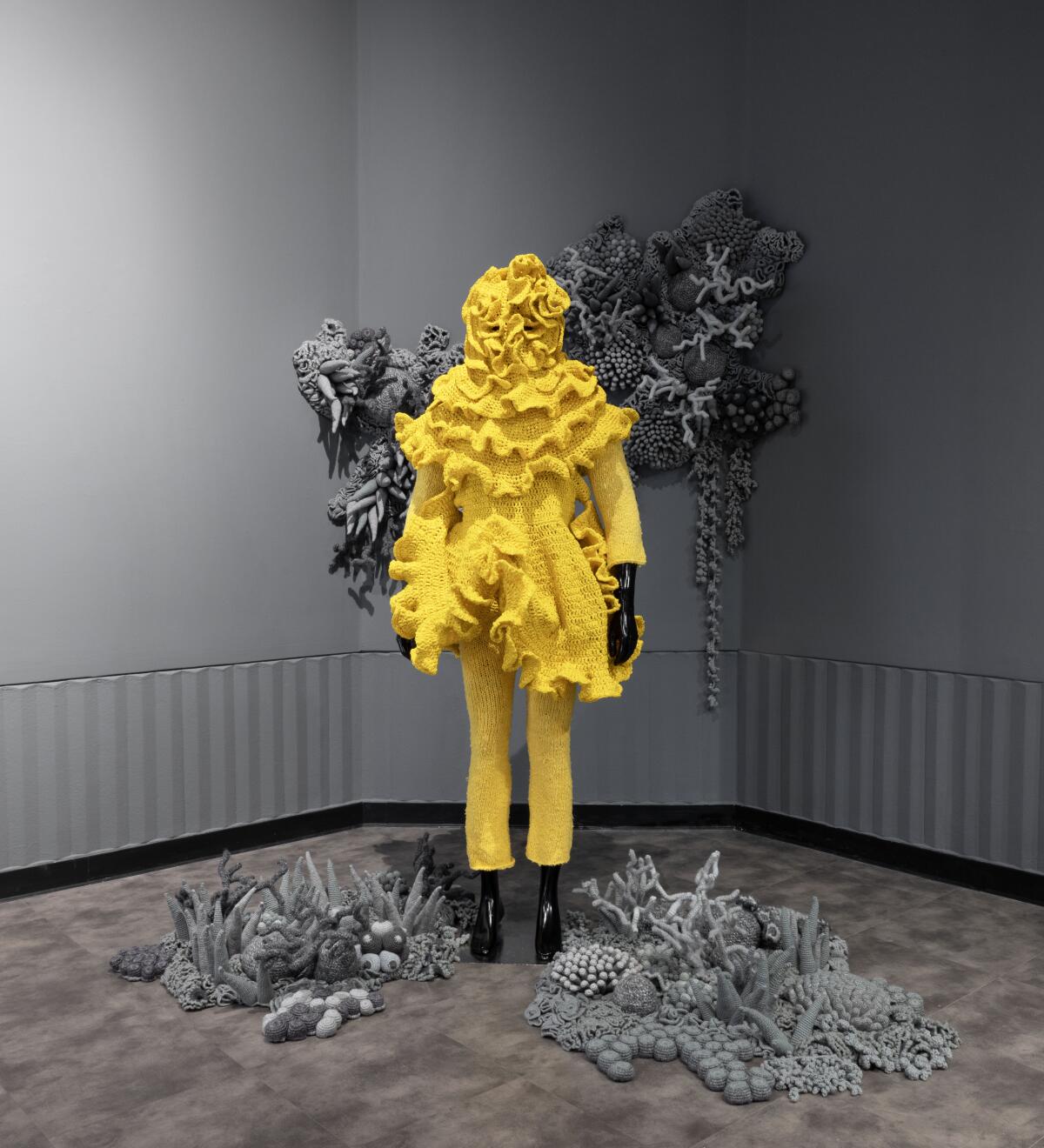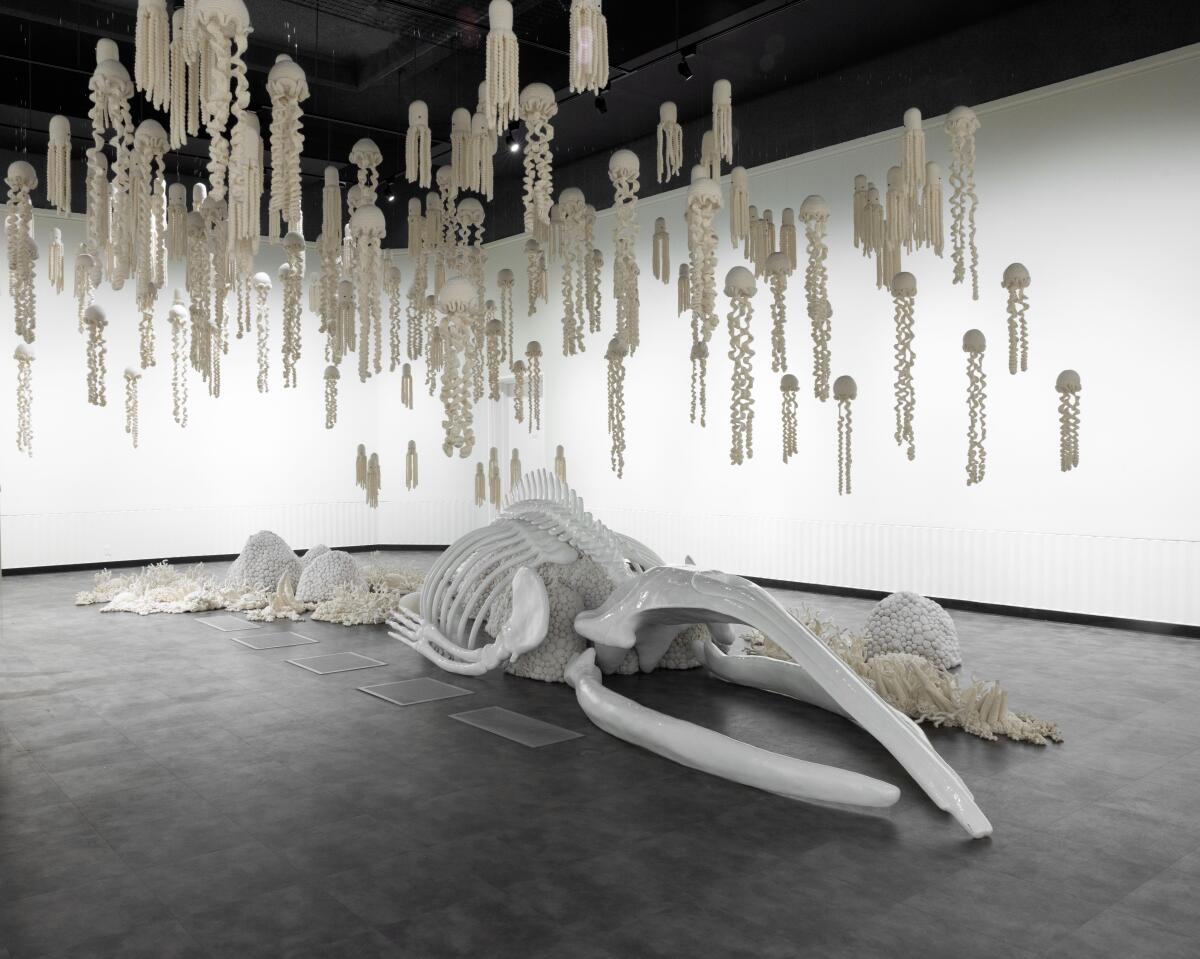A new art show uses colorful woven monsters to show visceral effects of climate change

Colorful knit sculptures of marine life are among the elements of Indonesian artist Mulyana’s “Modular Utopia” installation at USC Fisher Museum of Art.
- Share via
Five thousand hand-knitted bright orange fish dangle from the ceiling. Beneath them lies a colorful world of coral and, if you look closely, a friendly lobster. Peering through a collection of vibrant purple pompoms, a bright red coral sits atop blooming underwater vegetation. Each piece of art, emulating the ecosystem of the sea, is unlike another.
Unexpected details and colors shape Mulyana’s “Modular Utopia.” But as you step out of the installation titled “Ocean Wonderland” and through the museum space, the colors start to fade. The purple becomes gray and the life that once sprouted with joy and adventure blends into the white museum walls, falling out of view.
The new exhibit at USC Fisher Museum of Art is Mulyana’s first solo show in Los Angeles. The Indonesian artist, known for knitting and crocheting marine life out of upcycled materials like worn clothing and plastic bags, shapes a new utopia that simultaneously calls viewers to action. His practice is centered on sustainability and community, with attention to the fading colors of the world we inhabit.
During his first snorkeling venture at the Gili Islands, Mulyana was stunned to see how pollution had made the coral look gray. “It was very scary,” he says.
He reflects on this discovery in “Modular Utopia,” showcasing the effects of pollution on underwater life by contrasting something so beautiful with an environment gone bleak. The title of the exhibit comes from the pieces’ modular nature: Each section of coral can be pulled apart and rearranged, so he’s able to bring bits and pieces into new exhibitions.

“Modular Utopia” at USC Fisher Museum of Art marks Mulyana’s first solo show in Los Angeles.
He started his journey of creating these modular landscapes with pompoms. The technique he used for scarfs soon grew beyond clothing and into a creature: the mogus.
In 2008, Mulyana created his first mogus character, or monster, naming it after a combination of his family name and the Indonesian word for octopus. As we ventured through the exhibition space during installation, Mulyana pulled out from his bag that first mogus: a small, gray tentacled creation with a single eye and pink mustache.
Also on display are costumes “Si Koneng” and “Adikara” presented on mannequins. The characters are extensions of the coral reef, rising from the ground in green and yellow tones. Not only do they reflect feelings of isolation and liberation, but they also continue the theme of sustainability: “Si Koneng” is made from used yellow plastic bags and is woven into a costume full of curves and flowing layers.

Mulyana’s “Si Koneng” is made from used yellow plastic bags and is woven into a costume full of curves and flowing layers.
Mulyana pulls from used materials and overproduced plastics in his hometown of Yogyakarta — and sometimes abroad — to make his creations. Online, he documents the process by folding over a plastic bag, cutting it into strips and twisting it into knittable string. This can sometimes pose a problem when certain colors are hard to find and particular materials run out. But the limitation on materials is partially why his coral creations are so unique.
Over the years, Mulyana has shared his gift of knitting and crocheting with others. He’s taught workshops to kids and employed the help of a community of transgender women in the village of Sorogenen to create modular coral sculptures. A large part of his Islam faith involves sharing knowledge, and that’s what he aims to do with his artistic practice.
Curator John Silvis says, “From the very moment I went to the first studio, and then met Mulyana and other artists, it was very apparent to me that it’s a communal process. It really is a shared effort. Everyone is working in community.”

The final exhibit, “Satu,” displays a 30-foot-long whale skeleton surrounded by starved, white coral.
Collaboration is also why a significant portion of “Ocean Wonderland” is interactive, inviting viewers to create their own monsters with a mirror and loose body parts — including claws, eyes and bright lips. For Mulyana, it’s a group effort to bring the exhibition to life.
Each exciting and playful look in this underwater world leads to the final exhibit, “Satu.” In it, Mulyana displays a 30-foot-long whale skeleton surrounded by starved, white coral. Viewers come face to face with the outcomes of climate change.
“Sometimes we forget because we don’t live in the sea,” Mulyana says. “We need to remember that we have to take care of the environment that we live in.”
"Mulyana: Modular Utopia"
Where: USC Fisher Museum of Art, 823 Exposition Blvd., Los Angeles
When: Noon-5 p.m. Tuesdays-Fridays and noon-4 p.m. Saturdays. Runs through April 13.
Cost: Free
Info.: fisher.usc.edu
More to Read
The biggest entertainment stories
Get our big stories about Hollywood, film, television, music, arts, culture and more right in your inbox as soon as they publish.
You may occasionally receive promotional content from the Los Angeles Times.











